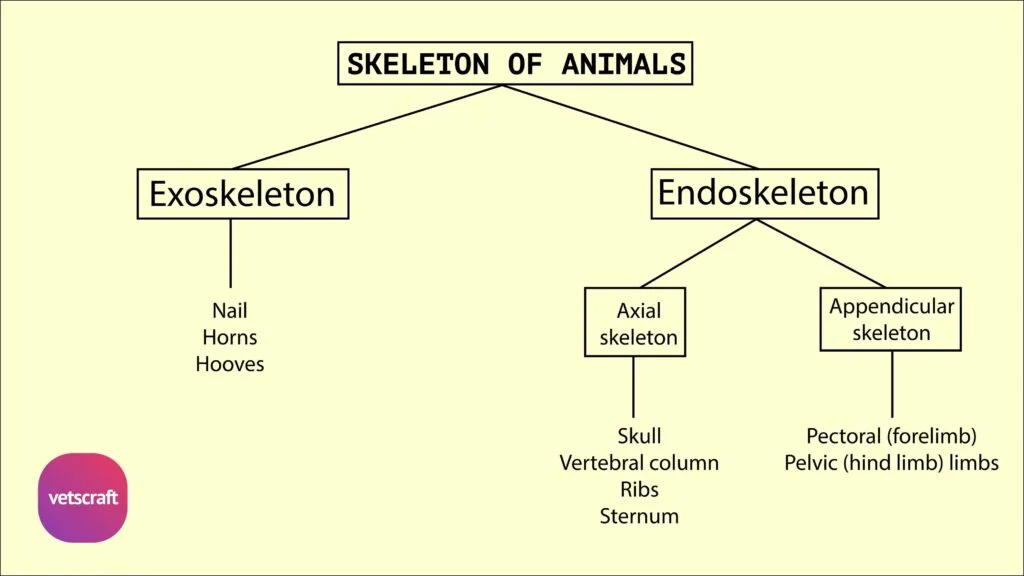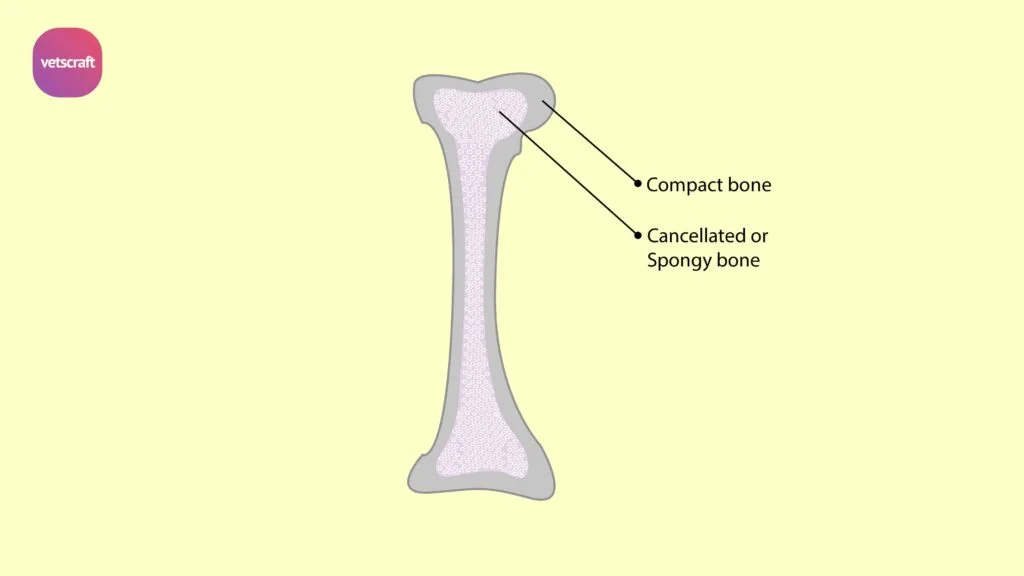TABLE OF CONTENTS
Mandible bone of animals
Mandible bone of animals is the bone of lower jaw. It is a single bone and largest of the facial bone.
Mandible bone of Ox
Mandible bone or lower jaw bone is a single bone. It is the largest bone of the face and is made up of two halves, which do not fuse completely so that a mandibular symphysis is present. It has a body and two rami.
Body of Mandible
The lingual surface of the body is covered in life by mucous membrane and tip of the tongue rests on it.
The mental surface is related to the lower lip.
The symphyseal surface/symphyseal border/serrated border/medial borders are rough and irregular.
The alveolar/anterior border presents alveoli for the lower incisor teeth.
Two rami of Mandible
The two rami of Mandible diverge backward from the body and enclose the mandibular space.
Each ramus is bent to form a horizontal part and a vertical part. The most prominent part of the curve is the angle.
The lateral surface is widest at the angle and narrow at either end. It is smooth and convex in the horizontal part and is nearly flat in the vertical part. A rough elevation near the angle and the rough line are for the insertion of the masseter muscle. It presents a fossa at its junction with the body. Placed in this fossa is the mental foramen-the external opening of the mandibular (inferior dental) canal. A small incisor canal continues the mandibular canal into the body of the mandible.
The medial surface of the horizontal part gives attachment to the mylo-hyoid muscle. An its junction with the body is a fossa for the genio-hoyid and genio glossus muscle. On the vertical part, this surface presents rough lines inferiorly for the medial pterygoid. Placed about the middle of this surface is the mandibular foramen the posterior opening of the mandibular canal. From the foramen, a groove leads forward and downward-the lingual groove for the lingual nerve.
The dorsal or alveolar border of the ramus presents the inter-alveolar space in front and six alveoli for the lower cheek teeth behind. In the vertical part it serves for the attachment of muscles.
The ventral border of the horizontal part is convex, and presents a smooth impression in its posterior part left by the facial vessels and parotid duct. It is concave and thin in the vertical part.
The anterior extremity of each ramus joins the body. The posterior or articular extremity presents a coronoid process in front separated by the mandibular notch through which passes the masseteric nerve. The coronoid process is long, curves backward into the temporal fossa and is for the temporalis.
The condyle is elongated transversely, placed about two inches below the summit of the coronoid process and articulates with the condyle of the squamous temporal through the medium of an interarticular cartilage. The condyle projects inwards for the lateral pterygoid.
Mandible bone of Horse
The two halves of the mandible fuse completely in horse.
The alveolar border of the body presents six alveoli for the lower incisors and two for the canines.
The lingual groove is absent.
The antero-medal part of the condyle presents a depression.
The fovea pterygoidea is for the lateral pterygoid muscle.
Coronoid process is less prominent in horse and the rami diverge less than of ox.
Mandible bone of Dogs
The two halves do not fuse in dog.
The alveolar border of the body presents six alveoli for the incisors and two for canines.
The horizontal part of ramus carries seven alveoli for the lower cheek teeth.
The interalveolar space is very short or even absent.
There are two or three mental foramina on either side.
The vertical part is relatively small and the lateral face of the vertical part presents a deep masseteric fossa.
The posterior border bears an angular process at the level of the mandibular foramen.
This is the equivalent of the angle of other animals. The condyle is placed very low.
The coronoid process is extensive and is bent slightly outwards and backward.
Mandible bone of Fowl
Mandible bone of Fowl is a single bone and each half is made up of five pieces in the embryo.
The two halves fuse anteriorly. Posteriorly its articular part carries an articular area for the lower end of the quadrate bone. Behind this, the ventral border is carried upward and backward by a process.
The quadrate bone articulates with the articular part of mandible below, above it articulates with the temporal, in front of the tympanic cavity, laterally with the quadrato jugal bone; medially with the pterygoid bone. It is irregularly four sided. Its anterio-medial angle projects into the orbit as a muscular process. The quadrate is the homologue of the mammalian incus (one of the middle ear ossicles). Its presence and the great mobility of the bone of the face permit extensive opening of the mouth. (See for details-under mandibular articulations in arthrology).

